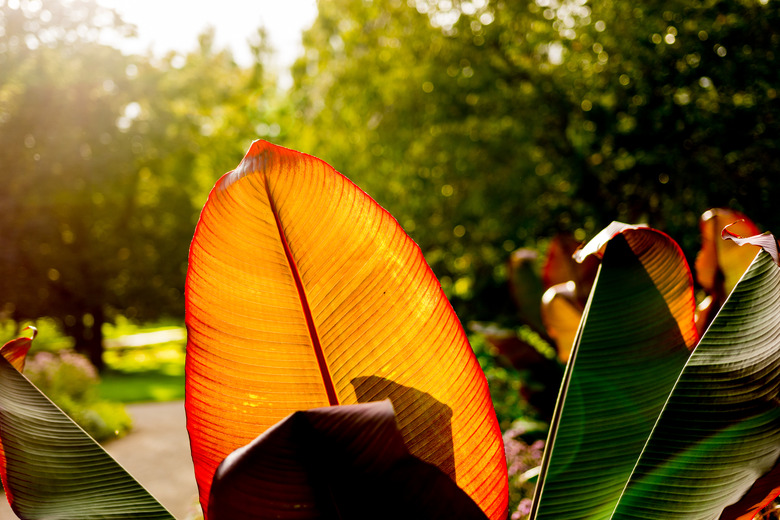How To Care For The Red Abyssinian Banana
We may receive a commission on purchases made from links.
The red Abyssinian banana is a cultivar of the false banana or Abyssinian banana (Ensete ventricosum, USDA zones 10-11). The red form is called Ensete ventricosum 'Maurelii,' prized for its red-tinged leaves. It can grow up to 18 feet high with leaves 10 feet long. Upright growth and a tropical appearance make the red Abyssinian banana a popular garden plant in temperate and subtropical areas.
How to Care for the Red Abyssinian Banana
1. Choose a Planting Location
Decide between planting it directly in the ground or in a container. Plant your Abyssinian red banana outdoors in rich soil after the last frost of the year. Amend the soil as needed with compost and other amendments to create rich, well-draining soil. Choose a sheltered, sunny site, as the large leaves of your banana tree can be seriously damaged by the wind. Too much shade will stunt growth and result in a straggly plant.
2. Water and Fertilize Regularly
Water thoroughly, at least twice a week in hot weather. The Abyssinian banana plant needs consistently moist soil without being waterlogged. Don't let the soil dry out completely before watering it again. The plant itself also likes moisture, so you can mist the leaves daily or use a humidifier near the plant if you grow it indoors.
3. Fertilize Abyssinian Red Banana
Fertilize every two weeks to satisfy the heavy feeding habits of the Abyssinian banana plant. Use a balanced fertilizer for the banana plant. You can also use a slow-release fertilizer four times per year to nourish the plant.
4. Prune the Plant
Remove any leaves that droop or are damaged, taking care not to cut the main stem. Your banana tree's stem is made up of leaf bases and can be easy sliced through with a sharp knife or pruning shears.
5. Repot Container Plants
Move the banana plant to a larger pot each year in the spring if you grow it in a pot. Each pot should be slightly larger than the last to provide more room for the roots. Choose a heavy pot to help keep the tall banana plant stable.
6. Make Winter Plans
Decide in fall whether to risk losing your Abyssinian red banana plant to winter frosts or whether to overwinter it. If your banana plant is potted and small enough, you can simply bring it indoors for the winter months and allow it to continue growing as-is. Bananas that are planted in the ground need to be dug up and prepared for overwintering.
7. Overwinter in a Greenhouse
Dig up your banana tree using a spade to cut through the roots about 6 inches from the stem. Remove all but the smallest leaves. Repot your banana tree in your greenhouse in a large plastic pot using multi-purpose potting mix enriched with organic matter, such as compost, and water sparingly. Keep your greenhouse at a minimum temperature of 39 degrees Fahrenheit throughout the winter.
8. Overwinter in Garage
Overwinter your Abyssinian red banana in a garage or storeroom if you do not have a greenhouse. Cut off all the leaves, leaving about 5 feet of stem, and clean the roots. Leave the stem to dry for a day and them wrap in breathable packing material and store upright in a cool, dark place. Your chosen site must not get below freezing or the stump will be damaged. Check your banana tree regularly and move to a colder spot if you see any root or leaf growth before spring.
9. Propagate Abyssinian Red Banana
Propagate your Abyssinian red banana from seed. After a few years, your adult banana tree will produce a large flower bud and then a bunch of small banana-like fruit full of small black seeds. Your adult tree will die after fruiting. The seeds germinate easily if sown in small pots of sterile, multi-purpose compost at a depth of 1 inch. Keep the compost damp and seal the pots inside a clear plastic bag somewhere warm until shoots appear. Germination can take as long as several weeks.
